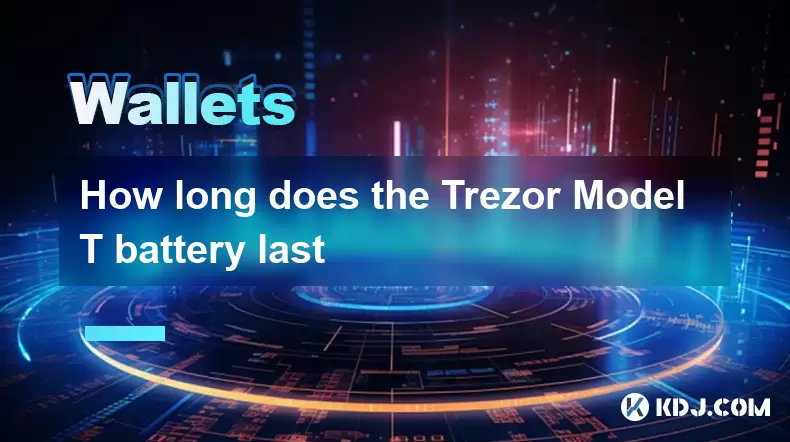-
 Bitcoin
Bitcoin $118,164.3721
-0.58% -
 Ethereum
Ethereum $3,439.2144
9.04% -
 XRP
XRP $3.2533
10.40% -
 Tether USDt
Tether USDt $1.0003
0.01% -
 BNB
BNB $719.2057
3.65% -
 Solana
Solana $176.1008
5.82% -
 USDC
USDC $0.9998
-0.01% -
 Dogecoin
Dogecoin $0.2141
6.52% -
 TRON
TRON $0.3122
3.73% -
 Cardano
Cardano $0.8144
9.21% -
 Hyperliquid
Hyperliquid $46.3175
-3.33% -
 Stellar
Stellar $0.4692
1.81% -
 Sui
Sui $4.0252
0.40% -
 Chainlink
Chainlink $17.0647
3.84% -
 Hedera
Hedera $0.2493
4.67% -
 Bitcoin Cash
Bitcoin Cash $495.9806
-0.87% -
 Avalanche
Avalanche $22.8661
3.91% -
 Shiba Inu
Shiba Inu $0.0...01442
4.59% -
 UNUS SED LEO
UNUS SED LEO $8.8195
0.03% -
 Toncoin
Toncoin $3.2344
4.19% -
 Litecoin
Litecoin $99.5361
2.51% -
 Polkadot
Polkadot $4.2226
2.56% -
 Monero
Monero $337.5953
1.12% -
 Pepe
Pepe $0.0...01358
4.99% -
 Uniswap
Uniswap $8.9955
-1.05% -
 Bitget Token
Bitget Token $4.7519
1.38% -
 Dai
Dai $0.9998
-0.03% -
 Ethena USDe
Ethena USDe $1.0002
-0.05% -
 Aave
Aave $322.0449
-2.20% -
 Bittensor
Bittensor $427.6037
-2.47%
How long does the Trezor Model T battery last
The Trezor Model T operates without a built-in battery, drawing power via USB to enhance security and avoid battery-related risks.
Jul 10, 2025 at 11:35 pm

Understanding the Battery Design of Trezor Model T
The Trezor Model T is a hardware wallet developed by SatoshiLabs, designed to securely store cryptocurrencies offline. Unlike traditional mobile devices, the Trezor Model T does not have a built-in battery. Instead, it operates as a USB-powered device, meaning it draws power directly from the connected computer or charging source when in use.
This design choice was made intentionally to enhance security and longevity. Since the device doesn't rely on an internal battery, users don't need to worry about battery degradation over time. Additionally, this eliminates potential risks associated with lithium-ion batteries, such as overheating or swelling, which could compromise the physical integrity of the device.
Power Consumption and Usage Scenarios
When using the Trezor Model T, power is supplied through a micro-USB or USB-C connection, depending on the model version. The device consumes minimal power during normal operations like signing transactions or confirming addresses. This low power draw ensures that even if used frequently, it won’t place significant demand on the host device’s power supply.
Since the Trezor Model T only powers on when connected to a computer or compatible mobile device, its operational life per session depends entirely on how long it remains plugged in. Users should note that continuous use for extended periods—such as during prolonged transaction confirmations—is perfectly safe due to the lack of heat-sensitive components like a battery.
Differences Between Trezor Models: Model T vs. Model One
Unlike the Trezor Model One, which also lacks a battery, the Model T features a full-color touchscreen that may raise questions about increased power consumption. However, the screen is optimized for efficiency and does not significantly impact power requirements. Both models function similarly in terms of energy usage since neither stores power internally.
One key distinction between the two models lies in user experience rather than power dynamics. The Model T's interactive display allows for more intuitive navigation and transaction verification without relying on the host device's screen. Despite these enhancements, the absence of a battery remains a consistent feature across both versions.
Best Practices for Maintaining Device Performance
To ensure optimal performance while using the Trezor Model T, users should follow several best practices:
- Always use original or certified cables to avoid power inconsistencies.
- Avoid connecting the device to unstable or untrusted power sources.
- Disconnect the wallet after use to minimize exposure to potential threats.
- Store the device in a cool, dry environment to prevent damage from moisture or extreme temperatures.
These steps help maintain the longevity of the device and ensure secure operations every time it's used.
Troubleshooting Power-Related Issues
If you encounter issues powering on your Trezor Model T, consider the following troubleshooting steps:
- Check the cable connection: Ensure the micro-USB or USB-C cable is securely plugged into both the device and the power source.
- Try a different port or computer: Sometimes, USB ports can malfunction or provide insufficient power.
- Use a powered USB hub: If connecting via a laptop with weak USB output, a powered hub can provide stable power delivery.
- Inspect the device for physical damage: Look for signs of wear or damage around the USB port that might interfere with power flow.
By addressing these potential problems, users can resolve most common power-related concerns quickly and efficiently.
Frequently Asked Questions (FAQ)
Q1: Can I replace the battery on a Trezor Model T?
No, the Trezor Model T does not have a battery to replace. It operates exclusively via USB power, eliminating the need for internal battery maintenance.
Q2: Does the Trezor Model T get hot during use?
The device may feel slightly warm during operation, especially when verifying complex transactions, but it does not generate excessive heat due to the absence of a battery or high-power components.
Q3: Is it safe to leave my Trezor Model T plugged in all the time?
While the device can remain connected indefinitely without risk of overcharging or battery damage, it's generally safer to disconnect it when not in use to reduce potential attack surfaces.
Q4: How does the Trezor Model T compare to other hardware wallets in terms of power usage?
Most hardware wallets like the Ledger Nano series do include internal batteries, which require periodic charging. In contrast, the Trezor Model T avoids battery dependency altogether, offering a more durable and maintenance-free solution.
Disclaimer:info@kdj.com
The information provided is not trading advice. kdj.com does not assume any responsibility for any investments made based on the information provided in this article. Cryptocurrencies are highly volatile and it is highly recommended that you invest with caution after thorough research!
If you believe that the content used on this website infringes your copyright, please contact us immediately (info@kdj.com) and we will delete it promptly.
- Trump, Meme Coins, and Tokens: A Wild Ride in Crypto
- 2025-07-17 18:50:12
- Ripple's EU Expansion: RLUSD Takes Center Stage, XRP's Role Defined
- 2025-07-17 18:30:12
- XRP Whale Alert: $73M Moved to Coinbase – Correction Incoming?
- 2025-07-17 19:10:14
- Sui (SUI), Mutuum Finance (MUTM), and DeFi Adoption: A Tale of Two Trajectories
- 2025-07-17 19:10:14
- Shiba Inu's ATH Ambitions: Can It Outpace the Competitors?
- 2025-07-17 18:30:12
- Cake Wallet, Privacy, and the Harper v. Faulkender Ruling: What You Need to Know
- 2025-07-17 18:50:12
Related knowledge

How to check my crypto wallet balance?
Jul 17,2025 at 06:28pm
Understanding Your Crypto Wallet BalanceWhen you hold cryptocurrencies, your wallet balance is a representation of the digital assets available for tr...

Hot wallet vs cold wallet explained
Jul 17,2025 at 05:28pm
What Is a Hot Wallet?A hot wallet is a type of cryptocurrency wallet that is connected to the internet. This allows for easy and quick access to digit...

Best crypto wallet for beginners
Jul 17,2025 at 06:50pm
Understanding the Needs of a Beginner in CryptocurrencyWhen entering the world of cryptocurrency, beginners often face confusion about how to securely...

What is a hardware wallet's secure element
Jul 11,2025 at 10:14pm
What is a Hardware Wallet's Secure Element?A hardware wallet is one of the most secure ways to store cryptocurrencies. Unlike software wallets, which ...

How to track crypto whale wallets
Jul 16,2025 at 10:00am
What Are Crypto Whale Wallets?Crypto whale wallets refer to large cryptocurrency holdings controlled by individuals or entities that have the potentia...

What is the difference between a custodial and non-custodial wallet
Jul 13,2025 at 03:21am
Understanding Wallet Types in CryptocurrencyIn the world of cryptocurrency, digital wallets play a crucial role in managing and securing assets. A wal...

How to check my crypto wallet balance?
Jul 17,2025 at 06:28pm
Understanding Your Crypto Wallet BalanceWhen you hold cryptocurrencies, your wallet balance is a representation of the digital assets available for tr...

Hot wallet vs cold wallet explained
Jul 17,2025 at 05:28pm
What Is a Hot Wallet?A hot wallet is a type of cryptocurrency wallet that is connected to the internet. This allows for easy and quick access to digit...

Best crypto wallet for beginners
Jul 17,2025 at 06:50pm
Understanding the Needs of a Beginner in CryptocurrencyWhen entering the world of cryptocurrency, beginners often face confusion about how to securely...

What is a hardware wallet's secure element
Jul 11,2025 at 10:14pm
What is a Hardware Wallet's Secure Element?A hardware wallet is one of the most secure ways to store cryptocurrencies. Unlike software wallets, which ...

How to track crypto whale wallets
Jul 16,2025 at 10:00am
What Are Crypto Whale Wallets?Crypto whale wallets refer to large cryptocurrency holdings controlled by individuals or entities that have the potentia...

What is the difference between a custodial and non-custodial wallet
Jul 13,2025 at 03:21am
Understanding Wallet Types in CryptocurrencyIn the world of cryptocurrency, digital wallets play a crucial role in managing and securing assets. A wal...
See all articles

























































































